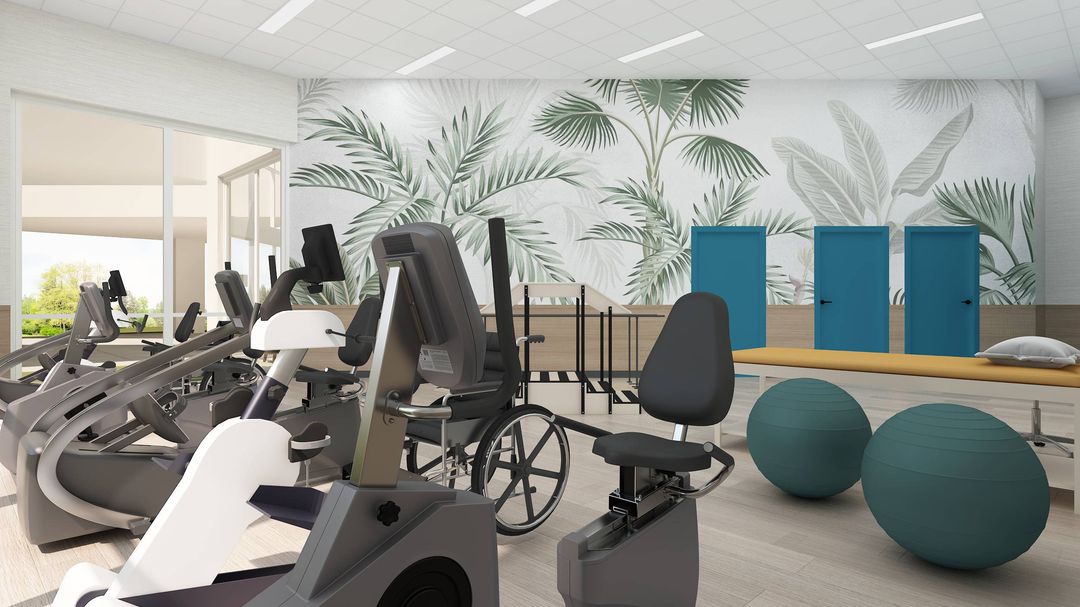
10.28.2025
Modern healthcare design has evolved beyond sterile walls and fluorescent lights. Today, patient care and spatial design are inseparable, each influencing outcomes, emotions, and experiences. As an interior design firm for medical offices, HH Designers approaches every medical project as a fusion of science, empathy, and aesthetic innovation.
Whether interior design for a healthcare facility in Florida or a boutique recovery center in New England, the mission remains the same: to create environments that heal, empower, and inspire. The following modern medical office design examples, all HH Designers projects, show how thoughtful interiors can redefine patient experiences while supporting operational excellence and clinical outcomes.
Medical offices once prioritized efficiency above all else: easy-to-clean materials, standardized furniture, and uniform lighting. But that model ignored the psychological dimension of healing. According to the American Society for Healthcare Engineering, the next era of healthcare design focuses on human-centered environments that reduce anxiety, promote recovery, and build trust.
Studies published in Healthcare Design Magazine show that color, lighting, and spatial organization directly influence cortisol levels and patient satisfaction. Similarly, research from the National Institute of Building Sciences confirms that design can lower stress for staff as well as patients, improving safety and retention.
In short, a well-designed medical space is not decoration, it is treatment.
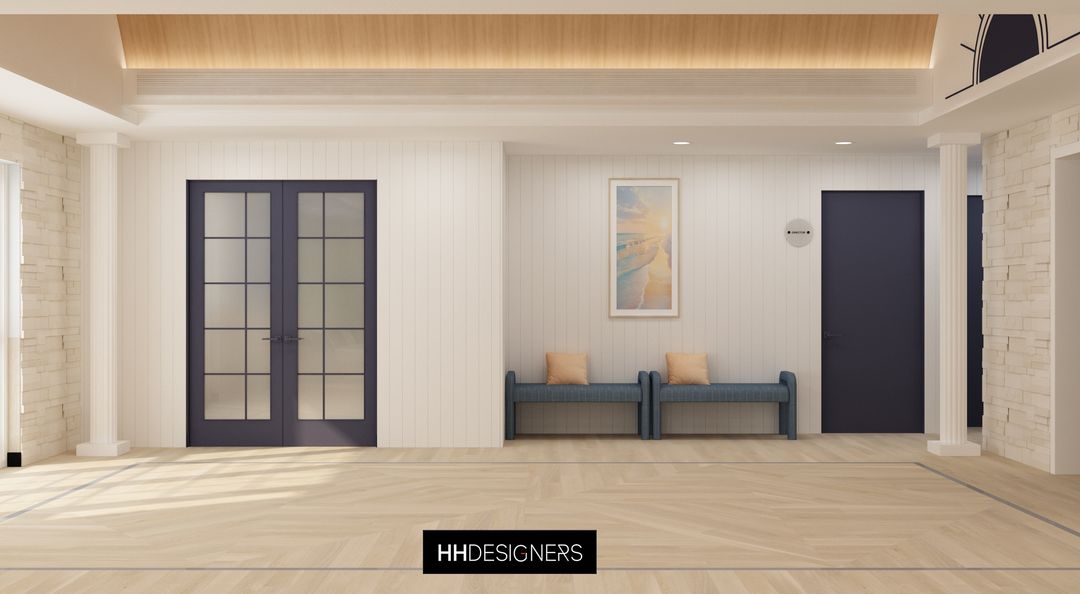
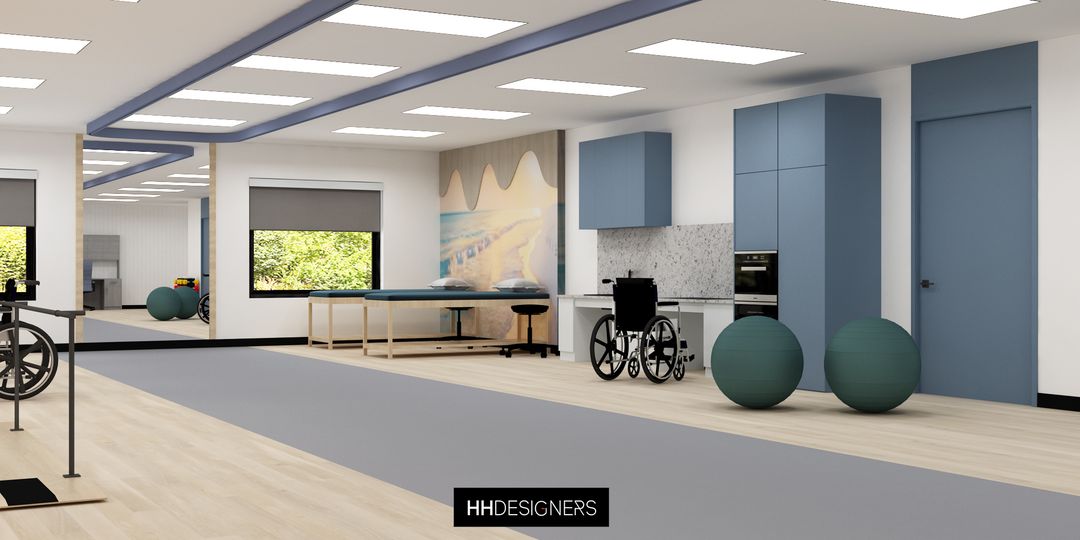
At Sunset Lakes Healthcare and Rehabilitation, HH Designers reimagined the clinical environment as a home. Traditional nursing facilities often feel cold and impersonal. Here, the design celebrates natural light, residential-scale furnishings, and hospitality-level details.
Soft seating clusters replace institutional waiting rows. Flooring transitions guide movement without relying on signage. In resident suites, layered lighting creates mood and control, encouraging independence and dignity.
The palette references Florida’s coastal tones such as muted corals, warm neutrals, and water-inspired blues, producing calmness proven effective by Evidence-Based Design (EBD) research.
Operationally, Sunset Lakes integrates hidden medical infrastructure. Nurse stations blend seamlessly into living areas, allowing staff to monitor without creating a “supervised” feeling. The design fulfills both ADA compliance and emotional safety, crucial elements emphasized by the Centers for Disease Control and Prevention (CDC).
Design takeaway: Create care environments that feel familiar, not institutional. Patients recovering long-term benefit psychologically when surrounded by spaces that resemble home more than hospital.

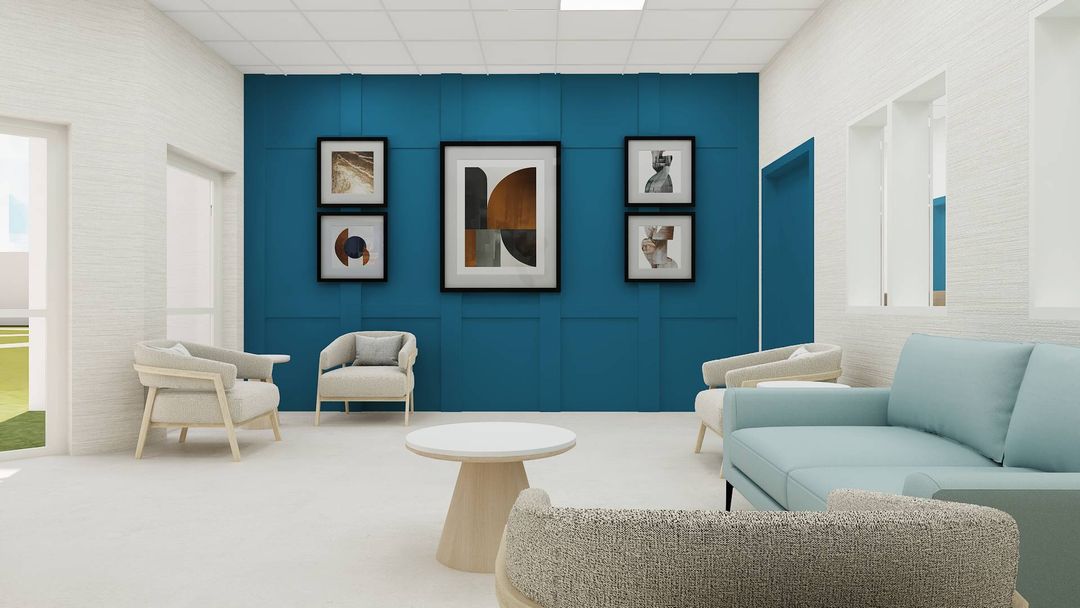
At Villa Health and Rehab Center, HH Designers brought the concept of “village” into healthcare. The layout is organized like a small community, with shared dining, social lounges, and private treatment suites arranged around central courtyards.
Natural light floods every corridor, fulfilling U.S. Green Building Council daylighting recommendations for wellness facilities. Each public area includes biophilic design cues, such as living plants, organic materials, and artwork inspired by nature, to foster connection and hope.
The reception and waiting zones avoid the typical “transaction counter.” Instead, they feature concierge-style desks and soft ambient lighting, creating hospitality over hierarchy.
Staff efficiency remains central. Support rooms are positioned for short travel paths, and acoustical controls minimize noise from medical equipment. Research from the Facility Guidelines Institute shows that reducing noise by even five decibels can meaningfully decrease patient stress responses.
Design takeaway: A medical center can mirror a neighborhood. Patients recover faster when the facility fosters belonging and emotional connection.
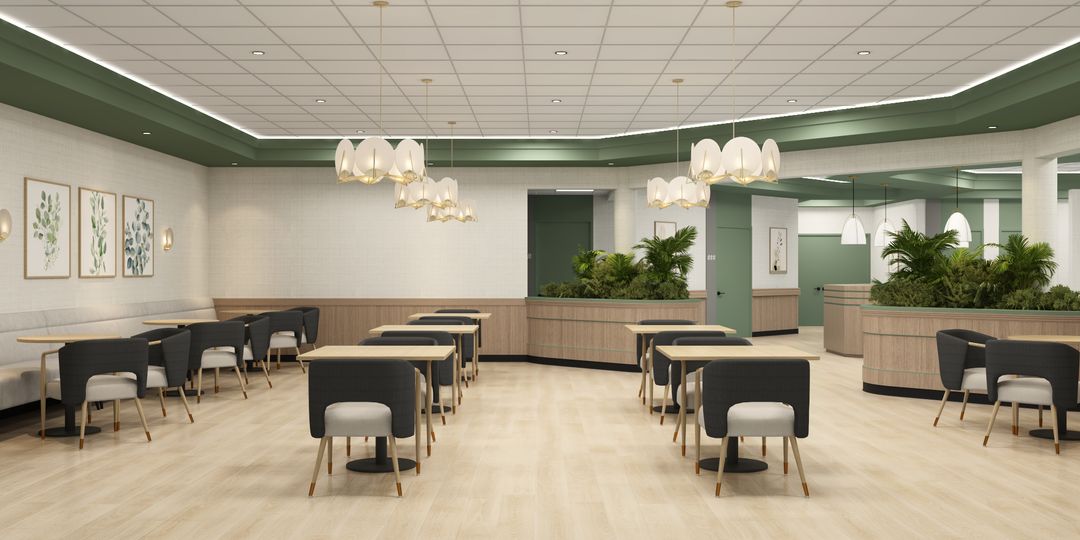
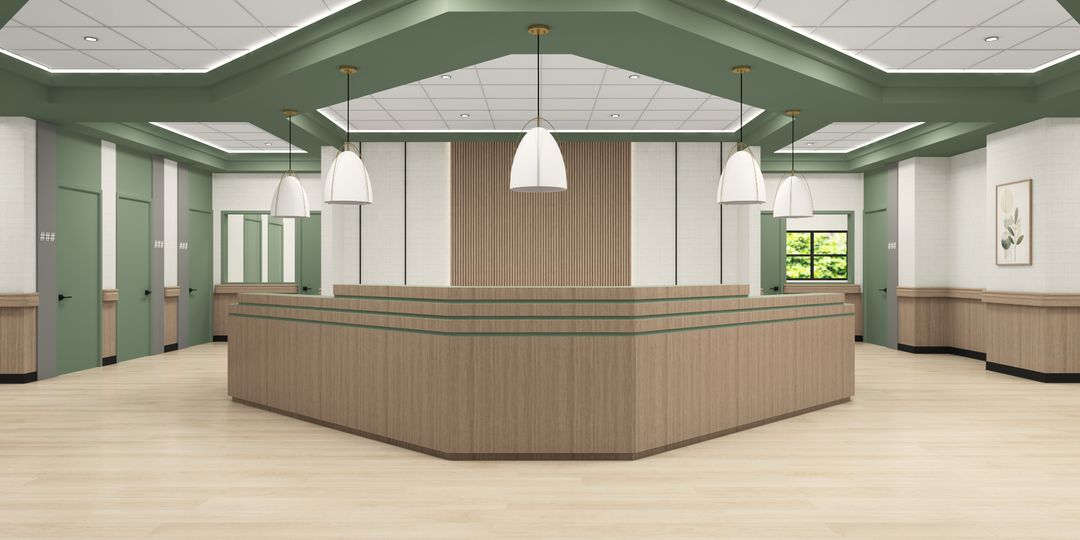
The Gardens Health and Rehab Center transforms the metaphor of “healing garden” into architecture. Every sightline ends in greenery. Courtyards, terraces, and planters become wayfinding elements, encouraging patients to walk, breathe, and engage.
Natural materials like stone, wood, and linen dominate finishes, grounding the senses. Biophilic design principles, validated by research from the American Institute of Architects, inform everything from color to lighting.
At the heart of the plan lies a therapy garden accessible to all mobility levels. Even patients confined to beds have direct views of vegetation. The design borrows from salutogenic theory, which argues that exposure to nature fosters meaning and resilience.
The Gardens also addresses infection control and sustainability in tandem. High-performance ventilation systems ensure air quality, while antimicrobial yet eco-conscious materials align with CDC guidelines on environmental infection prevention.
Design takeaway: Nature is medicine. Integrating organic forms and daylight into every zone improves both recovery metrics and staff morale.

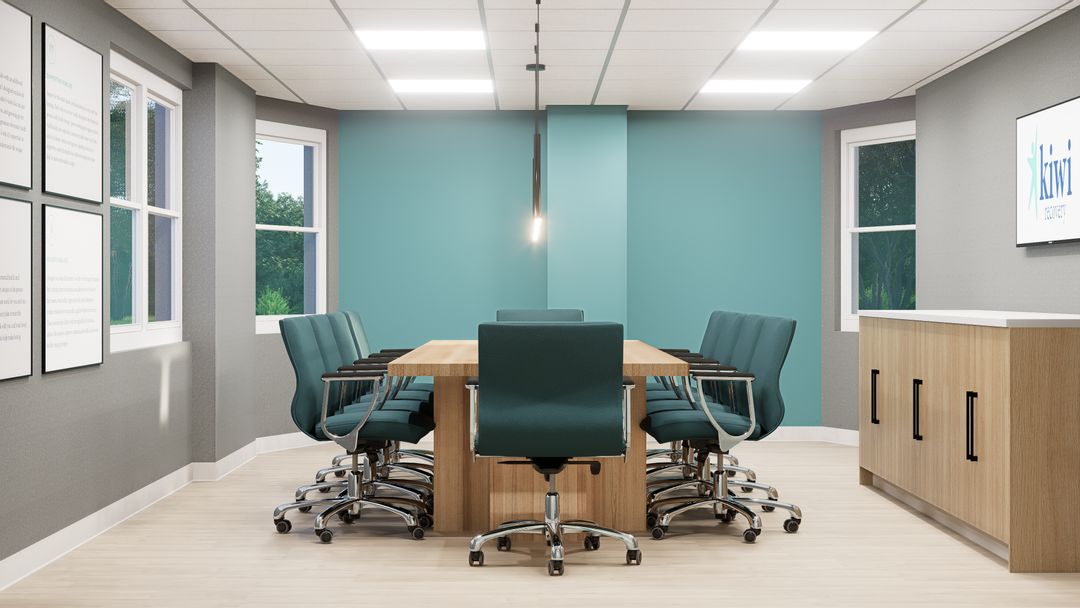
In Kiwi Recovery, HH Designers demonstrates that behavioral health design can be both modern and uplifting. Located in the Boston metro area, this day-treatment center serves individuals in recovery from mental health and substance use challenges.
The design rejects outdated institutional tropes. There are no harsh lights, no sterile corridors, no “clinical coldness.” Instead, the space radiates calm professionalism, a combination of clean architectural lines and restorative color palettes.
Each program room receives tailored lighting and acoustic treatments based on use. Group therapy rooms are intimate yet open. Private offices for clinicians maintain transparency with glass partitions that preserve privacy through gradient frosting.
The waiting area, often the most stressful zone in behavioral health settings, functions like a living room. Textured upholstery, plants, and warm LED lighting create an environment of respect and welcome.
HH Designers’ plan also optimizes operational flow. Staff circulation routes are discreet, allowing clinicians to move between sessions without disrupting clients. This aligns with planning strategies advocated by the American Society for Healthcare Engineering.
The result is a space that heals through design, combining comfort, dignity, and data-backed wellness design standards.
Design takeaway: Behavioral health spaces should convey empowerment, not confinement. Transparency, tactility, and calm tones build trust between clinicians and clients.


Lady Lake Health and Rehab Center is a case study in seamless continuity between short-term rehabilitation and long-term living. HH Designers approached the project with a philosophy of “progressive familiarity,” where each wing transitions visually and functionally from medical to residential.
Early-stage rehabilitation zones prioritize flexibility and monitoring. As patients progress, they transition toward quieter, more personal environments, mirroring the journey from dependence to independence.
Design language reinforces this progression. Durable yet elegant materials dominate active areas, while soft furnishings and art installations define recovery wings. Color transitions subtly mark milestones, moving from cool neutrals near therapy rooms to gold and coral hues in private suites.
This patient journey mapping aligns with recommendations from the National Institute of Building Sciences on therapeutic wayfinding. By embedding psychological cues into space, Lady Lake helps patients internalize their progress.
Operationally, Lady Lake demonstrates sustainability leadership. LED lighting, efficient mechanical systems, and high-recycled-content finishes meet LEED Healthcare criteria. The design proves that sustainability and comfort can coexist beautifully.
Design takeaway: A medical space can visualize recovery as a journey. Gradual shifts in color, layout, and texture reinforce hope and progress.
Modern medical environments are increasingly guided by the principles of evidence-based design, which uses measurable data to inform aesthetic decisions. Research aggregated by the Center for Health Design reveals that:
HH Designers’ projects integrate these findings intuitively. In Sunset Lakes, for example, high window-to-wall ratios deliver circadian rhythm support. In Kiwi Recovery, indirect lighting mimics daylight transitions, aiding mood stabilization.
Evidence-based design is not about trend following. It is about translating science into human experience. Every square foot becomes a silent clinician, supporting recovery through design rather than procedure.
While patient experience drives healthcare design narratives, staff wellness is equally critical. The American Society for Healthcare Engineering emphasizes that caregiver fatigue leads to higher error rates and burnout.
HH Designers counters this through ergonomic planning and psychological relief zones. In Lady Lake and Villa Health, decentralized nursing pods reduce travel distances and improve visibility. Staff lounges incorporate daylight and natural materials, reminding caregivers that their well-being matters.
In Kiwi Recovery, dedicated clinician offices balance confidentiality with connection, enabling team collaboration without the stress of overcrowded workstations.
Efficient back-of-house planning also improves infection control and resource management, as recommended by the Facility Guidelines Institute. Every second saved walking between supply and patient zones translates into more time for care.
Design takeaway: Healthy environments heal staff first. When caregivers thrive, patients do too.
Every HH Designers healthcare project begins with empathy, understanding not just what the space must do, but how it should feel. Patients arrive anxious, staff are stretched, families are hopeful yet uncertain. Design must translate that complexity into calm clarity.
At Sunset Lakes, that empathy appears in soft transitions and intuitive wayfinding. At The Gardens, it manifests in views of greenery from every bed. At Kiwi Recovery, it takes the form of private comfort and collective safety.
Empathetic design acknowledges vulnerability and responds with dignity. It builds emotional trust, which studies by Healthcare Design Magazine correlate directly with patient adherence and satisfaction.
The next generation of medical offices will merge hospital-grade performance with hospitality-level experience. Expect:
HH Designers’ portfolio, from Villa Health to Kiwi Recovery, reflects this evolution. Each project is a living laboratory for how architecture, psychology, and operational logic converge.
Modern medical design is about humanity. Patients seek not only treatment but dignity. Clinicians need environments that sustain their focus and compassion. Communities expect facilities that contribute to sustainability and wellness.
HH Designers’ healthcare portfolio, including Sunset Lakes Healthcare and Rehabilitation, Villa Health and Rehab Center, The Gardens Health and Rehab Center, Kiwi Recovery, and Lady Lake Health and Rehab Center, proves that aesthetics and ethics can coexist.
The future of medicine will be designed, not just delivered. By blending scientific evidence, cultural awareness, and creative intuition, HH Designers continues to redefine what healthcare spaces can be: warm, efficient, sustainable, and profoundly human.
To explore how design can transform care delivery and patient experience, partner with an interior design firm for medical offices that understands healing begins the moment someone walks through the door.
